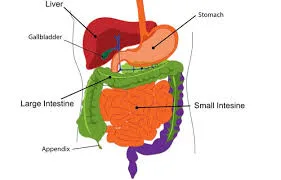Campylobacter infection, often referred to as campylobacteriosis, is a bacterial infection commonly associated with foodborne illnesses. It’s crucial to comprehend this ailment thoroughly, including its causes, symptoms, treatments, and preventive measures. In this comprehensive guide, we’ll delve into every aspect of campylobacteriosis, empowering you with the knowledge to safeguard yourself and your loved ones.
What is Campylobacter Infection?
Understanding the Bacteria
Campylobacter is a genus of bacteria that can cause illness in humans and animals alike. Among its species, Campylobacter jejuni is the most common cause of campylobacteriosis in humans. These bacteria are typically found in the intestines of animals, particularly poultry such as chickens, and can contaminate meat during processing.
Transmission and Symptoms
Campylobacteriosis is primarily spread through the consumption of contaminated food, particularly undercooked poultry, unpasteurized milk, and untreated water. Additionally, contact with infected animals or their feces can lead to transmission. The symptoms of campylobacter infection often include diarrhea, abdominal pain, fever, nausea, and vomiting, which typically manifest within 2 to 5 days after exposure.
Treating Campylobacter Infection
Seeking Medical Attention
If you suspect you have contracted campylobacteriosis, it’s crucial to seek medical attention promptly. While the infection often resolves on its own within a week, severe cases may require antibiotic treatment to alleviate symptoms and prevent complications.
Hydration and Rest
In mild cases of campylobacter infection, the focus is on managing symptoms at home. Ensure adequate hydration by drinking plenty of fluids, and get plenty of rest to aid your body in fighting off the infection.
Antibiotic Therapy
In cases of moderate to severe campylobacteriosis, antibiotics such as azithromycin or erythromycin may be prescribed to shorten the duration of the illness and reduce the severity of symptoms. However, antibiotic resistance is a growing concern, so it’s essential to use antibiotics judiciously and as prescribed by a healthcare professional.
Precautions in Daily Life
Food Safety Practices
Preventing campylobacter infection starts with practicing proper food safety measures. Thoroughly cook all poultry products to an internal temperature of at least 165°F (74°C), and avoid cross-contamination by keeping raw and cooked foods separate.
Hand Hygiene
Frequent handwashing with soap and water is essential for reducing the risk of campylobacteriosis. Wash your hands before handling food, after using the restroom, and after contact with animals or their environments.
Safe Drinking Water
Ensure that drinking water comes from a safe and reliable source, particularly when traveling or camping in areas with questionable water quality. When in doubt, opt for bottled or boiled water to prevent contamination.
Campylobacter infection, though often mild and self-limiting, can cause significant discomfort and inconvenience. By understanding the bacteria, its transmission routes, symptoms, and treatment options, as well as implementing preventive measures in daily life, you can minimize the risk of contracting campylobacteriosis. Remember to prioritize food safety, practice proper hand hygiene, and ensure the safety of drinking water sources to safeguard your health and well-being.




